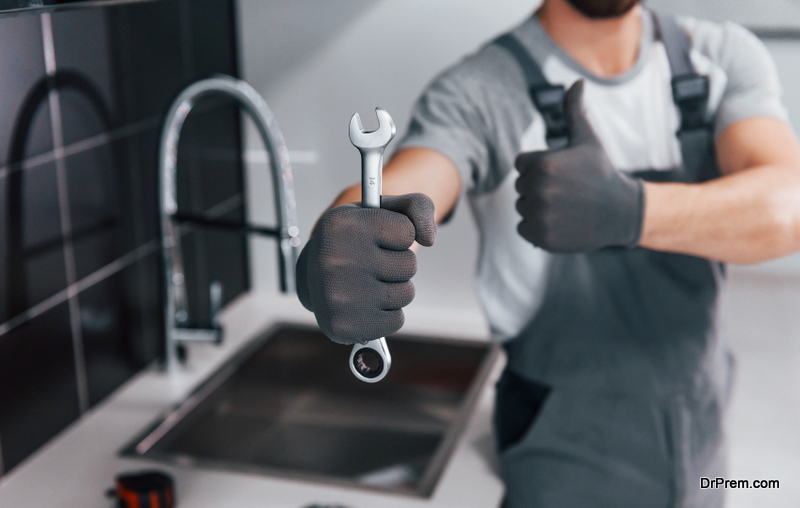Every person on earth interacts with plumbing systems in one way or another. From the moment that tap is opened in the morning to the time the dishwasher hums its closing tune at night, plumbing is a vital part of daily life.
Now, as sustainability saturates all facets of life and industries, it becomes increasingly necessary to understand and implement eco-friendly solutions in all areas, including plumbing. This exploration gives a nuanced view of ways modern plumbing practices can shift towards a more sustainable approach.
For help implementing these eco-friendly plumbing solutions, get in touch with the professionals at Wills Plumbing Adelaide. They are at the forefront of applying modern and green plumbing options that have a minimal impact on the environment.
The Deep Connection Between Plumbing and Environment
Plumbing is deeply interconnected with the environment. Traditional plumbing practices utilize finite resources and can have negative environmental impacts. Everything from water sourcing, heating, and waste disposal connects directly to the immediate and extended environment.
Current Environmental Impact of Plumbing Practices
Some of the most significant impacts of traditional plumbing practices include substantial water wastage, inappropriate plumbing materials, and energy inefficiency with water heating practices. Such practices directly contribute to the over-strain on natural resources and environmental pollution, with problems escalating due to the climate crisis.
Understanding Green Plumbing: A Brief Overview
Green plumbing is a more sustainable way of installing and maintaining plumbing systems. It aims to use less water, minimize energy usage, and reduce the environmental impact of plumbing materials. For example, this could mean installing high-efficiency toilets, low-flow showerheads, and water heaters that reduce wasted energy.
The Increasing Importance of Sustainable Plumbing
The growing urgency to combat climate change and preserve resources underscores the need for sustainable plumbing. Facing droughts, water scarcity, and escalating energy prices, green plumbing solutions offer an efficient way to conserve water, save energy, and foster a more sustainable future.
Main Eco-Friendly Solutions in Modern Plumbing
There are many feasible green plumbing solutions you can incorporate into your life. They range from water-saving fixtures and efficient piping materials to heat recovery drain water and rainwater harvesting systems. These solutions help reduce water and energy usage, and they provide multiple positive impacts on the environment.
Advantages of Implementing Green Plumbing Solutions
Green plumbing solutions offer numerous benefits. They assist in water conservation, decrease dependency on fossil fuels, mitigate climate change effects, and reduce utility costs. By embracing sustainable plumbing practices, you’re not just aligning with environmental needs but also reaping a financial benefit from lower utility bills.
The Role of Water-Saving Fixtures
Water-saving fixtures play a marquee role in eco-friendly plumbing. Low-flow devices, like faucets, toilets, and showerheads, use less water without compromising functionality. They carry substantial potential for conserving water and contribute positively to the environment.
Low-Flow Systems and Their Environmental Impact
Low-flow systems significantly reduce water consumption. Installing a low-flow showerhead alone can save nearly 5,500 gallons of water a year for a single person. This water-saving means less energy for water heating and less strain on water treatment facilities, leading to an overall positive environmental impact.
Heat Recovery, Greywater and Rainwater Systems
Heat recovery drain water, greywater systems, and rainwater harvesting are other impressive solutions in modern plumbing. Heat recovery systems recover the heat from drainage water and use it to preheat cold feed water, thereby saving energy. Greywater systems reuse lightly used water from showers and sinks, while rainwater harvesting collects and uses rainwater. These systems significantly reduce water consumption and reliance on municipal water supply.
Sustainable Plumbing Materials: Going Beyond PVC
In addition to conserving water and energy, eco-friendly plumbing also highly considers the materials used for pipes and fixtures. Notoriously harmful materials like PVC are being replaced with more earth-friendly options, such as copper, brass, and cast iron.
Case Studies: Success Stories in Green Plumbing
One notable real-life example of green plumbing is the Orange County Water District in California. They have successfully implemented a Groundwater Replenishment System which recycles used water and transforms it into drinking quality water, significantly reducing water waste and contributing to a sustainable water supply for the local community.
The Challenges of Implementing Green Plumbing
The path to sustainable plumbing faces several challenges, including higher upfront costs and the need for specialized knowledge and training. Also, the implementation has to be tailored to the local geography and climate, making each solution unique. Yet, the benefits far outweigh these obstacles and are a substantial investment in the future of the planet.
Final Thoughts
As you can see, implementing eco-friendly solutions in modern plumbing practices transcends improving a single home or business. It’s about addressing a global challenge, reducing carbon footprints, conserving resources, saving money, and showing respect for the environment. Every step taken toward sustainable plumbing practices is a stride toward a more significant and brighter future. There’s no better time than now to start making these changes and ensuring a sustainable future.
Article Submitted By Community Writer




